STEM創作室STEM Project太陽能淨水器Solar Water Purifier
下載:Download:
學生工作紙
Student’s Worksheet
學習技能:Learning skill:
立體打印3d printing
立體打印3d printing
學習範圍:Learning areas:
 水的淨化原理及其他淨水新發明Principle of water purification and other new inventions
水的淨化原理及其他淨水新發明Principle of water purification and other new inventions
 使用立體打印機製作工具Produce parts by a 3D printer
使用立體打印機製作工具Produce parts by a 3D printer
 淨水器製作Make a water purifier
淨水器製作Make a water purifier
 淨水器容量計算Calculate the capacity of water purifier
淨水器容量計算Calculate the capacity of water purifier
議題重點:Main issues:
水資源短缺、水質污染及可持續發展Water shortage, water pollution, sustainable development
前言Introduction
全球降雨和人口分布不平均,一些國家可能因水資源豐富,經濟得以發展,但同時可能受泛濫困擾;反之則可能因水資源不足而飽受乾旱之苦。在近半個世紀以來,全球經濟急速發展和人口不斷增加,用水需求大幅上升,水污染越趨嚴重,令原已短缺的水資源更見緊絀,威脅着全球人類的健康與發展,尤其是欠發達國家。如果再這樣不持續地使用水資源,終有一天水資源會枯竭,我們的下一代將因而受害。
針對水資源短缺和水污染問題,我們將在這次活動中製作一個簡單的「太陽能淨水器」,將污水淨化成清水,從而增加水資源和改善水質。
Global distribution of precipitation and population is uneven. Some countries get richer water resources and enjoy higher level of economic development, but they may be threatened by flooding. On the other hand, some countries suffer from water shortage due to insufficient water resources. In the past 50 years, a rapid increase in water demand and the problem of water pollution have intensified the water shortage problem, especially in less developed countries. If we continue to use water in an unsustainable way, our future generations will have to bear the consequences.
In this activity, we will make a simple ‘solar water purifier’. It aims to increase water resource and improve water quality.
基礎知識Background knowledge
水資源概況Overview of water resources
地球有四分之三的面積被水覆蓋,水分看似充足,但只有 3% 是可供人類使用的淡水資源;而由於大部分淡水資源儲存於冰川和地底中,難以被抽取和使用,因此可供人類直接使用的淡水資源僅佔全球總水量大約 0.4%。然而,隨着工業和城市發展,這 0.4% 的可用水受到不同程度的污染。根據世界衛生組織的統計,全球至少有 18 億人飲用受污染的水,導致每年有超過 50 萬人死於腹瀉。
Three-forth of the Earth is covered by water. However, only 3% of it is freshwater that is available for human use. Since most freshwater is frozen or stored underground, a mere 0.4% is readily extractable. Unfortunately, this small reserve of freshwater is being polluted due to industrialisation and urbanisation. According to the World Health Organisation (WHO), 1.8 billion people in the world are consuming contaminated water and 500 000 people die of diarrhea a year.
科學概念Scientific concept
使用蒸餾法把水淨化Purifying water by distillation
我們可以用蒸餾法把污濁的水淨化。在蒸餾過程中,水受熱變成蒸汽,這個過程稱為沸騰。水變成蒸汽時,雜質會留在水中,因此蒸汽不含雜質。蒸汽其後冷卻時凝結變回水,收集所得的水稱為餾液。蒸餾法可除去水中可溶的雜質、不可溶的雜質和微生物,因此蒸餾水是純淨的,適宜飲用。
We can purify water by the method of distillation. First, water is heated. It evaporates to water vapour when it boils, leaving the impurities behind. The collected water vapour is called distillate. The distillate does not contain any impurities and is therefore suitable for drinking.
設計與製作Design and DIY
使用簡單材料製作太陽能淨水器Using simple materials to make a solar water purifier
現在你可嘗試製作一個簡單的太陽能淨水器,並思考如何應用淨水方法來製作一個小工具,為有需要地區提供潔淨食水。試利用以下的建議材料,並依圖示完成。
Now, you can make a simple solar water purifier by applying the distillation method to provide clean water for areas in need. Use the materials below and follow the instructions shown in the pictures:
建議工具:
油性畫筆、剪刀或鎅刀、可用於塑料的膠水、安全手套
注意事項:
使用剪刀或鎅刀時必須注意安全,或配戴安全手套,以免受傷,或在老師同意下使用其他工具,例如小型電鑽。
Materials:
| Plastic bottles (with cap) | 2 |
| Thick drinking straw | 1 |
Tools:
Marker pen, scissors or cutter, glue, safety gloves
Caution:
Be careful when using scissors or cutter, or it is better to wear safety gloves. Seek the teacher’s approval for using other instrument, for example, small electric drill.
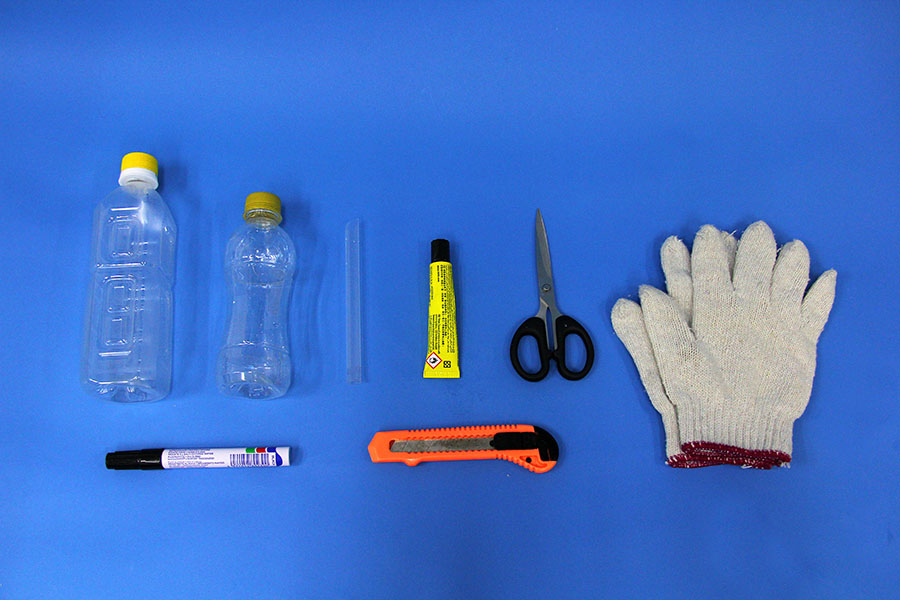
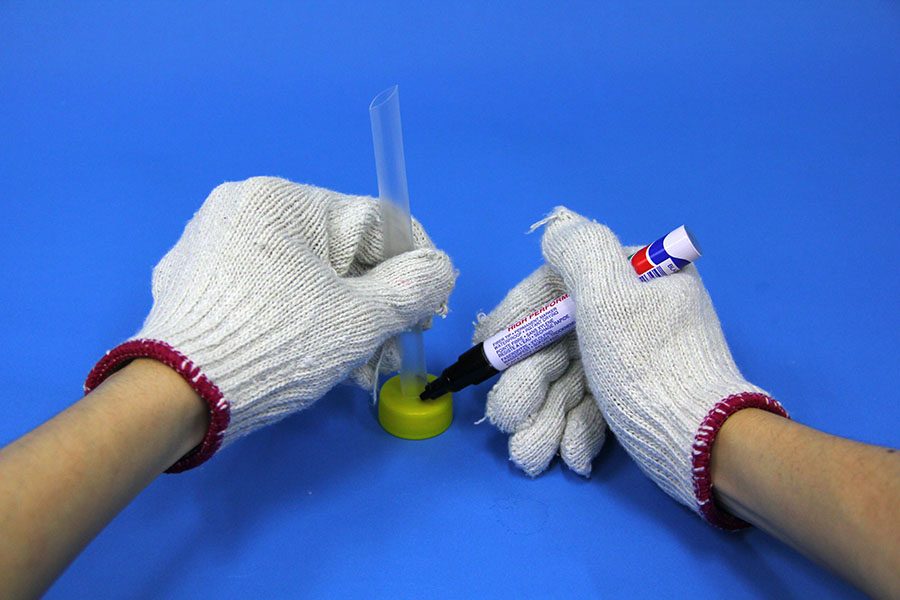
1. 把飲管放在樽蓋上,依飲管的大小在兩個樽蓋上畫上圓形。
1. Place a drinking straw on a bottle cap and draw a circle along the circumference of the straw.
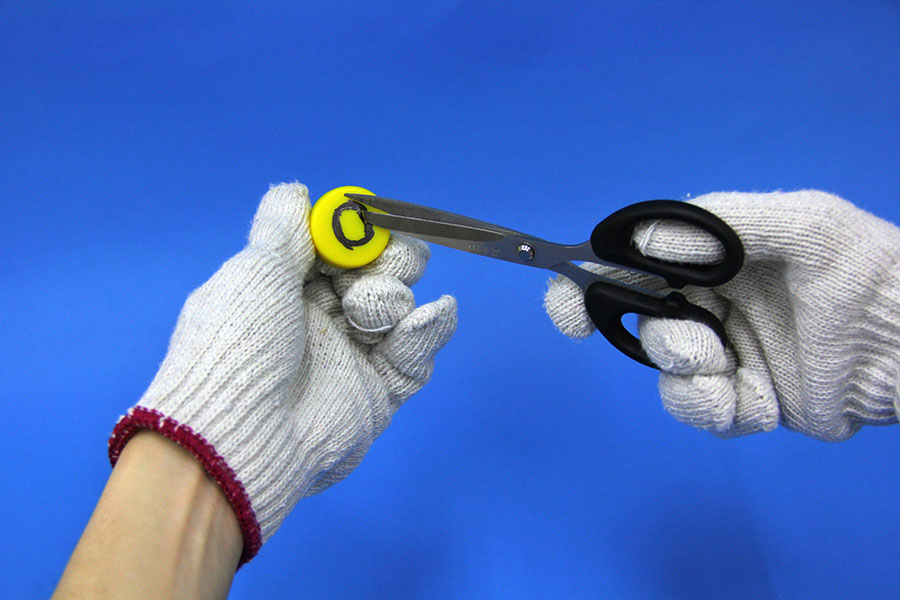
2. 使用剪刀或鎅刀,裁走所畫部分。
2. Cut off the circle by using scissors or a cutter.
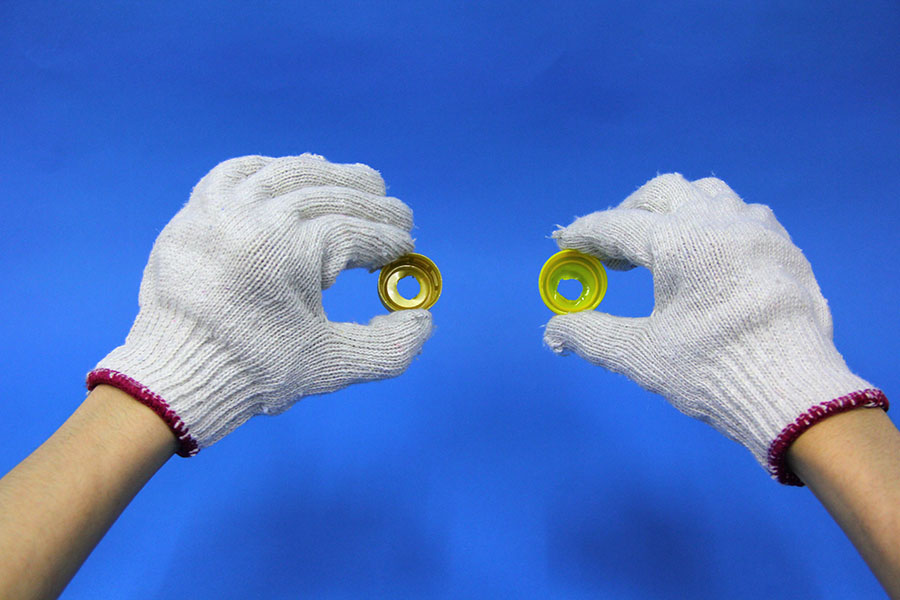
3. 你應可得到兩個中間有洞的樽蓋。
3. You will obtain two bottle caps with a hole in the middle.
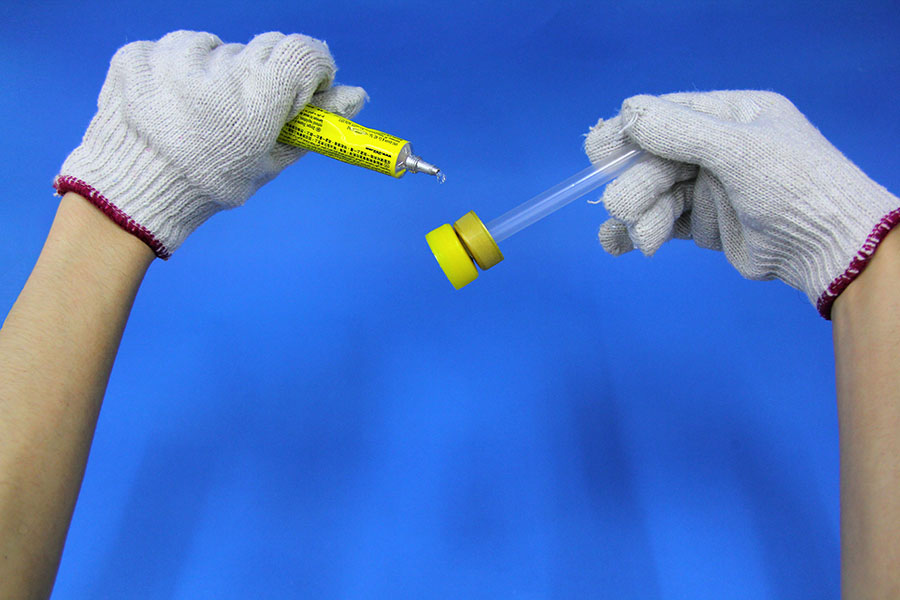
4. 將兩樽蓋「面對面」放在一起,把飲管穿過在中間的洞,將兩個樽蓋移到飲管的一端,然後用膠水將樽蓋及飲管黏實。
4. Put the two caps together and insert the straw into them. Stick the caps and the straw with glue.
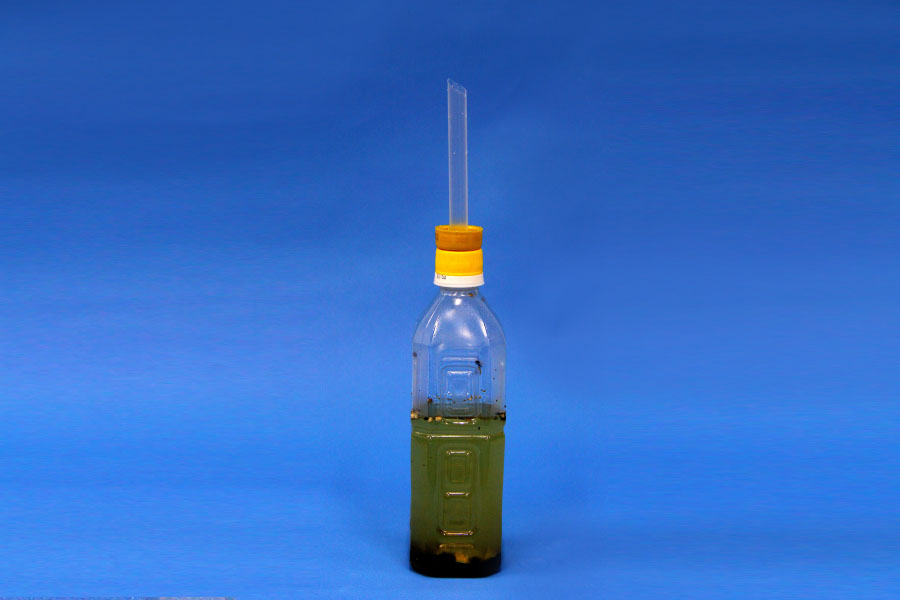
5. 將污水放進其中一個膠樽,並把已黏實的樽蓋連飲管套在膠樽上,留意飲管必須向上。
5. Fill a bottle with some muddy water. Put the stuck caps on the bottle with the straw facing upwards
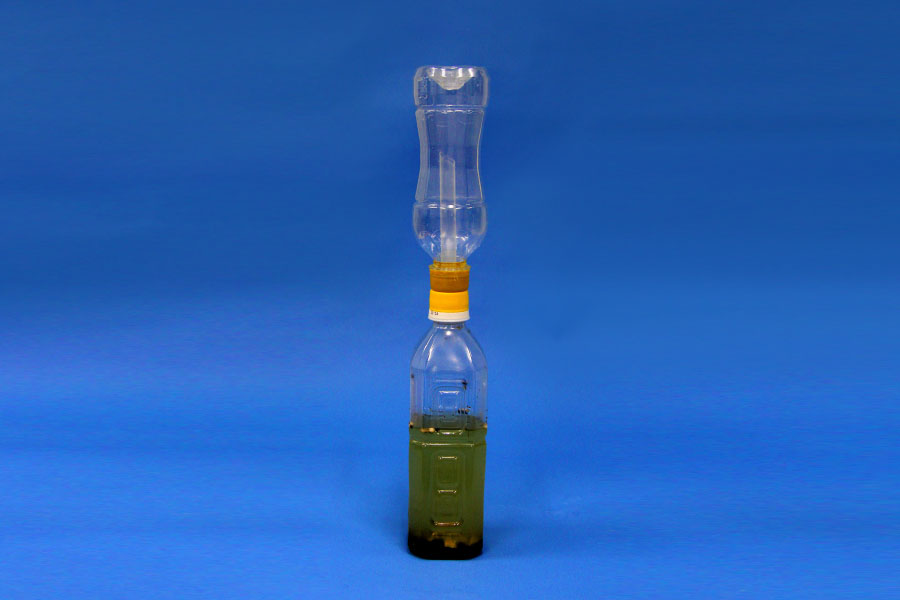
6. 把另一個空的膠樽倒轉並套在上方的樽蓋上。如有需要,應裁剪飲管,讓飲管與上方膠樽的底部留有空間。淨水器已完成。
6. Put another bottle upside-down and screw it with the cap. Cut the straw if necessary to allow some space between the straw and the base of bottle. The water purifier is completed.
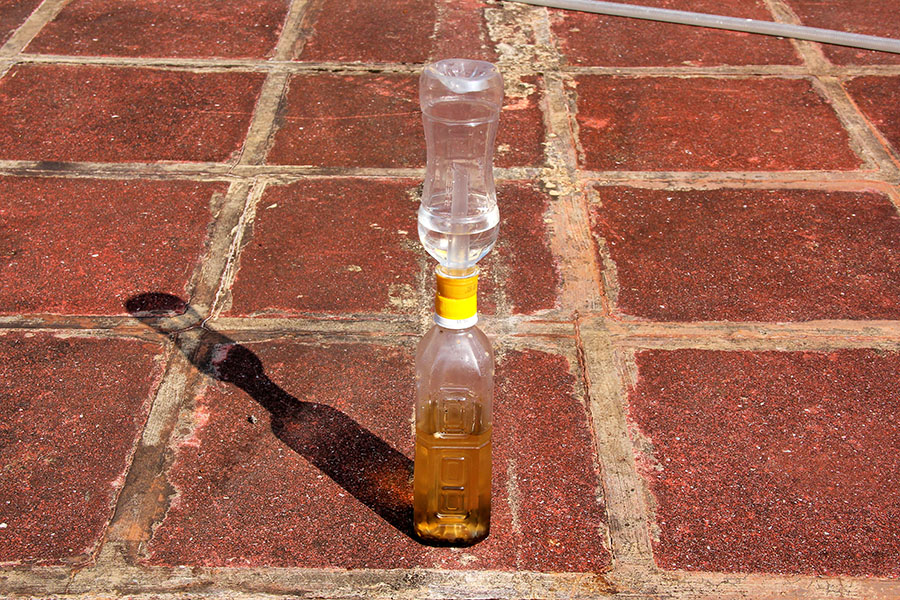
7. 把淨水器放到太陽下,或在實驗室以枱燈照射作模擬效果。數小時後,上方的水樽會收集到一些淨水。
7. Put the water purifier under the sun or under a table lamp in the laboratory. After several hours, some clean water will be collected in the upper bottle.
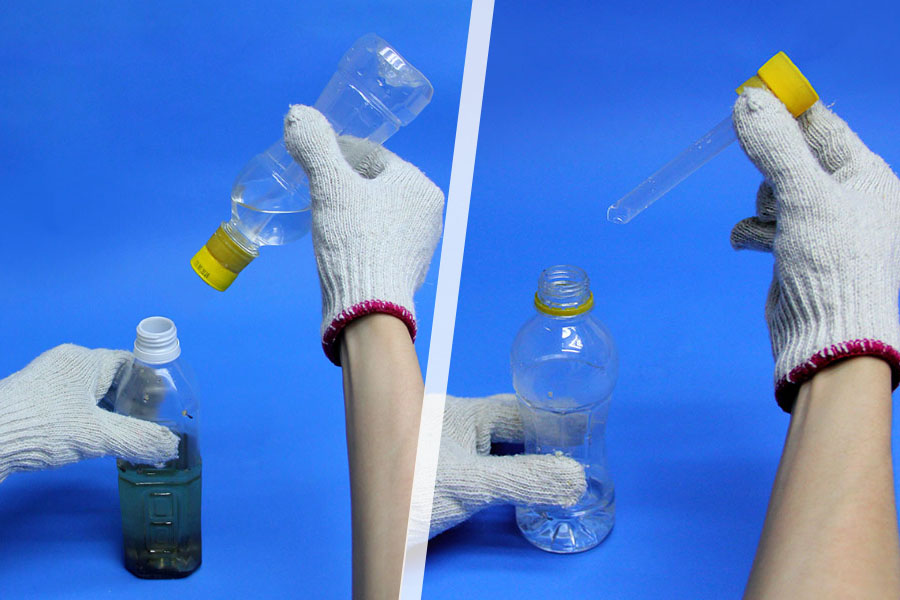
8. 當收集到足夠的淨水後,可先移去下方盛了污水的膠樽。把上方膠樽倒轉並開啟樽蓋,你便可倒出淨水。
8. Separate the two bottles when sufficient amount of clean water is collected. You can then obtain clean water from the upper bottle.
注意:這淨水器僅供實驗之用。由於所使用的膠樽未必衛生,收集的淨水也有可能接觸到樽蓋接口位置的膠水,請勿直接飲用由這裝置淨化出來的水。
Caution: This model is used for demonstration only. The plastic materials used for making the water purifier may not be clean. Do NOT drink any water purified by the model.
動腦筋Think about
1.
Explain the principle of the solar water purifier.
3.
你的同學認為這淨水器不可淨化海水為食水,你同意嗎?為甚麼?
3.
Your classmate thinks that this purifier cannot turn seawater into drinking water. Do you agree with him / her? Why?
4.
你認為這太陽能淨水器有甚麼好處和壞處?
好處:
壞處:
4.
What are the pros and cons of this water purifier?
Pros:
Cons:
5.
甚麼是可持續發展?可持續發展包括哪三個層面?試從這三方面解釋這個裝置如何達致可持續發展。
5.
What is sustainable development? Which three aspects does it include? Explain how this device achieves sustainable development from the three aspects.
科技應用Application of technology
使用立體打印機製作淨水器Using 3D printer to make water purifier
如學校有提供立體打印機,你可下載預製的淨水器模型。若依網頁指示設定打印模型的尺寸,製成品應可應用到巿面上常見的膠水樽(膠樽蓋的扭紋需與模型配合)。
使用方法:
如本活動製作的淨水器一樣,先預備兩個膠水樽。下方水樽先注入污水,將打印出來的模型套在水樽上,模型中間的通管向上,最後放置一個空的水樽在上方以收集蒸發所得的淨水。把淨水器放到太陽下,或在實驗室內以枱燈照射以模擬效果。過了數小時後,上方的水樽可收集到淨水。
If a 3D printer is available in your school, you can download the ready-made models for 3D printing from . The product printed according to the instruction will fit the cap of most plastic bottles found in the market.
How to use:
Prepare two plastic bottles and fill the lower bottle with muddy water. Screw the printed model in the bottle with the ‘pipe’ facing upwards. Place an empty bottle on top to collect clean water obtained from distillation. Finally, put the purifier under the sun or under a table lamp in the laboratory. After several hours, clean water will be collected in the upper bottle.
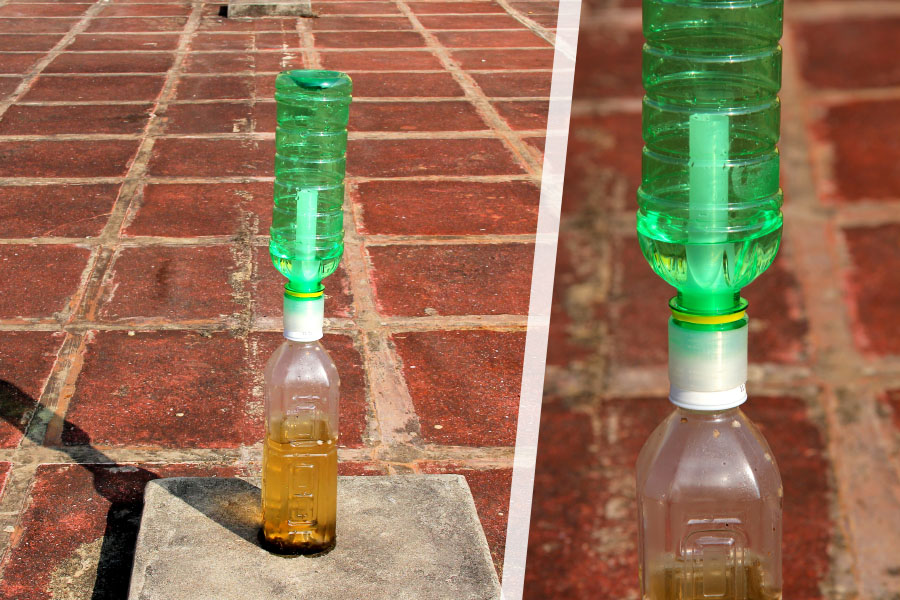
使用方法
How to use
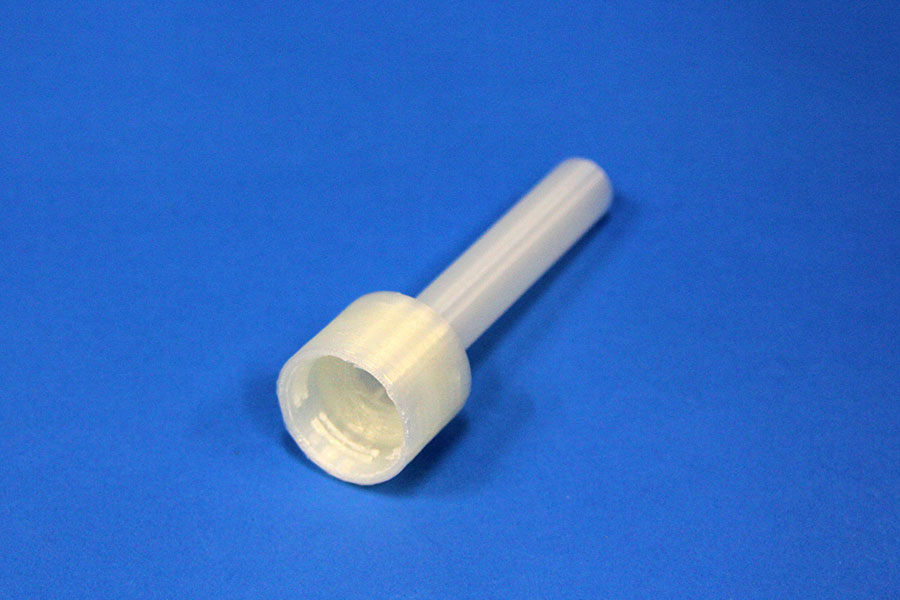
立體打印的模型
3D-printed model
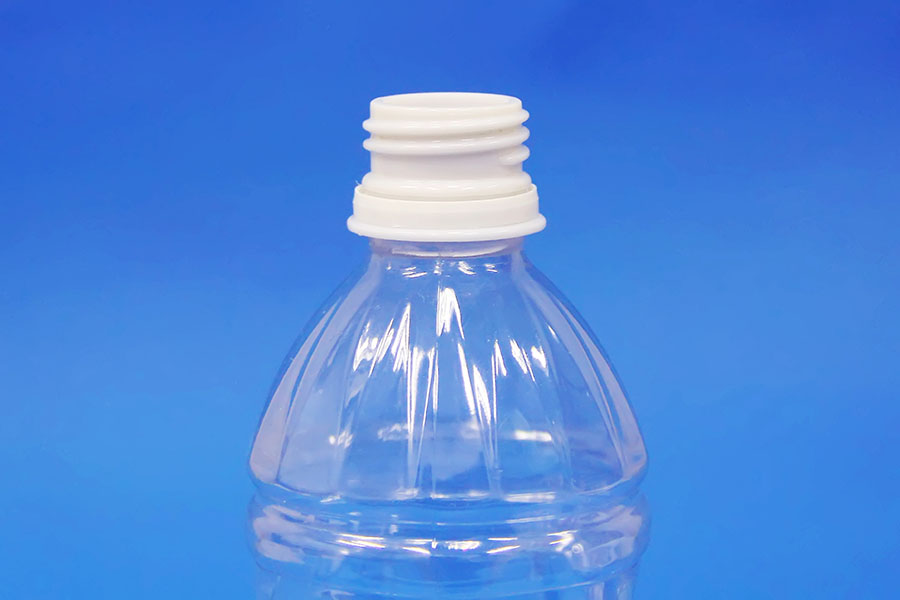
適用的樽蓋紐紋
Pattern of the cap
如你已學會基本的3D繪圖技能,你也可使用一些3D製圖軟件(例如
Blender),嘗試更改模型設計,以提高淨水器的效能,例如提高中間通管的長度以增加淨水的儲存量。
If you are familiar with 3D graphic tools (e.g.
Blender), you can design your own 3D water purifier.
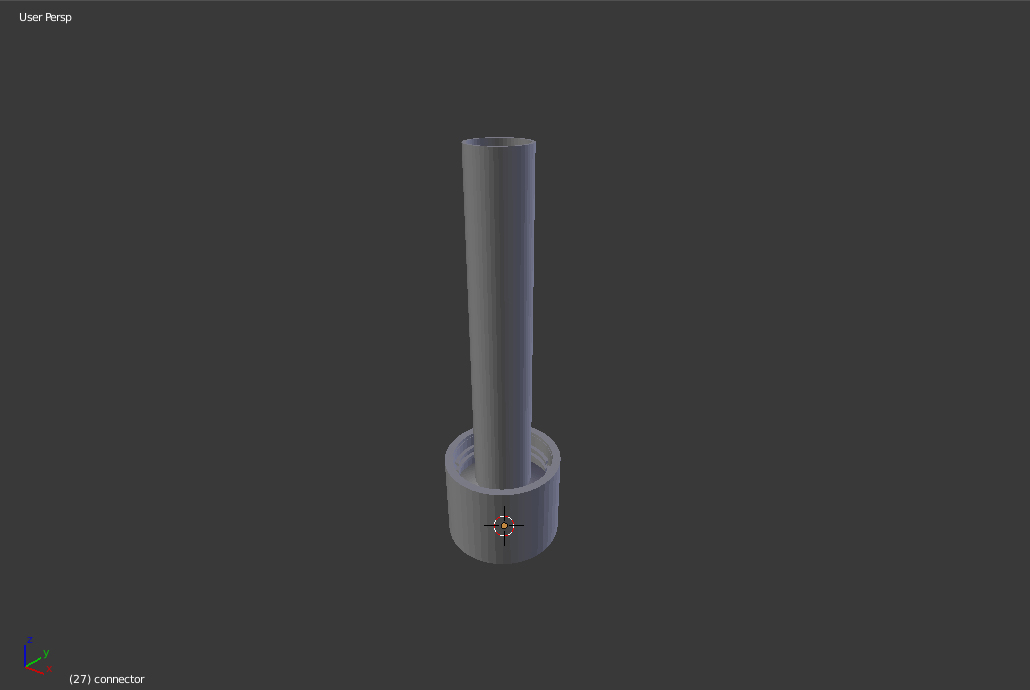
在 Blender 載入模型檔案
Import the 3D model using Blender
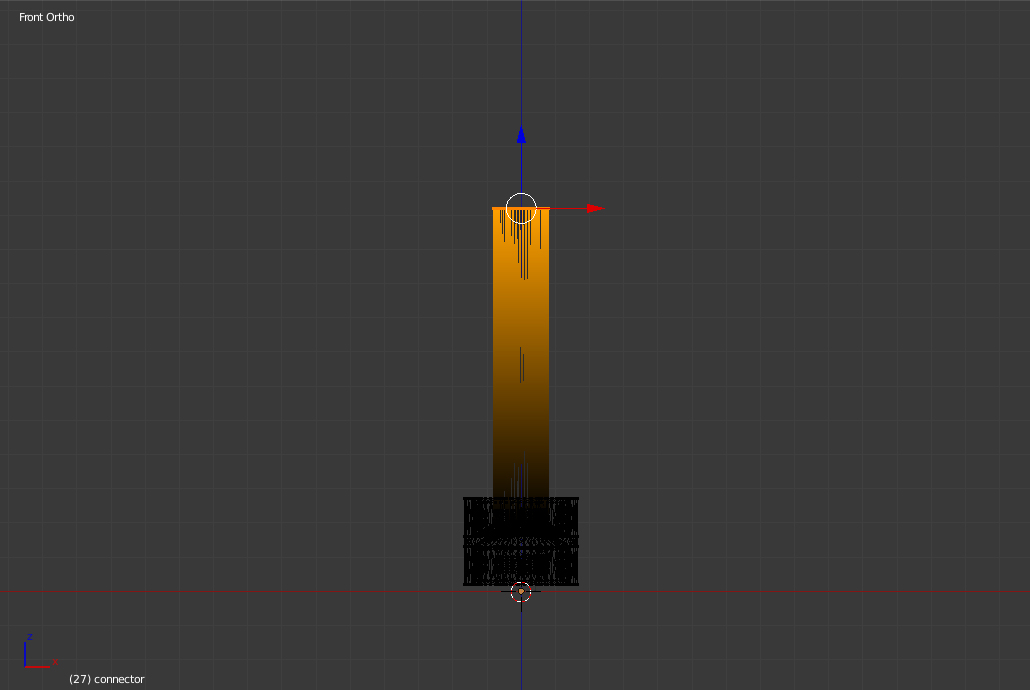
選擇中間的通管形狀
Select the ‘pipe’ shape in the centre
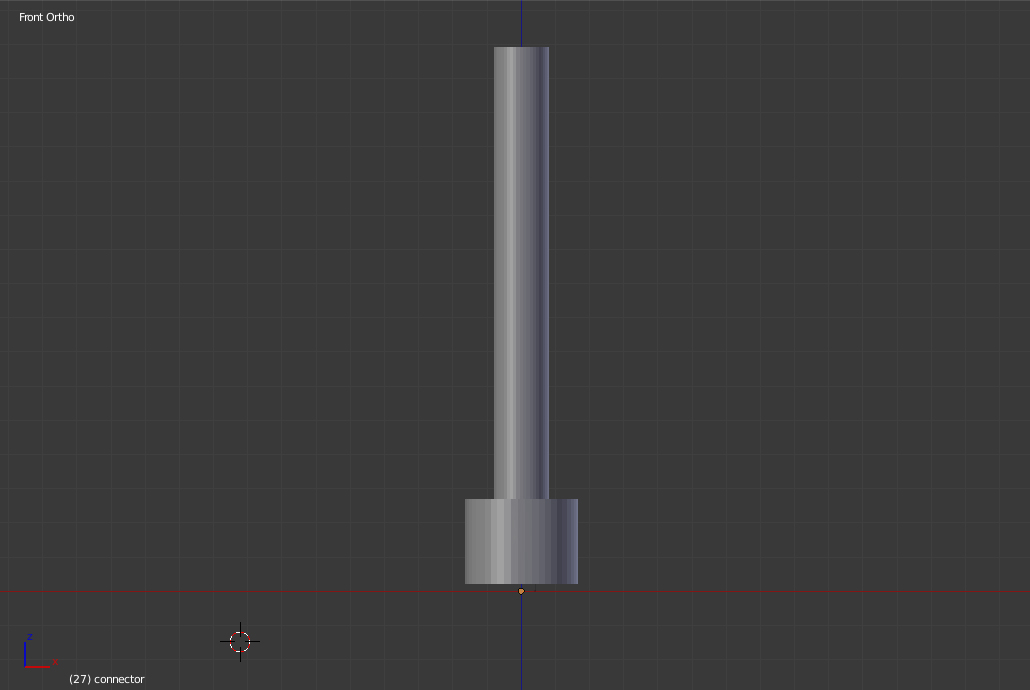
修改通管長度並列印出來
Revise the length of the pipe and then print it out
注意:這模型僅作打印示範,由於立體打印機所使用的塑料未必適合作盛水器,請勿直接飲用由這模型淨化出來的水。有關使用方法,你也可參考本活動的支援網頁。
Caution: This model is used for demonstration only. The plastic materials used for making the water purifier may not be clean. Do NOT drink any water purified by the model.
創新發明Innovation
分享有關淨水的新發明或概念產品Sharing on new inventions or concepts of water purification
世界各地有不少個人、組織或企業研發新穎的淨水器。試參考以下網頁,或到一些初創企業或網上眾籌網站,尋找一些有關淨水的新發明或概念產品。試思考該淨水器的淨水原理、功效、設計與實用性,並與同學分享。
Globally, many individuals, organisations or companies have been conducting research on developing new water purifiers. Below are some examples. Evaluate their principle, effectiveness, design and practicality, and share your views with your classmates.
Suggested keyword:
water purifier
我想分享的新發明/概念產品(淨水器)名稱:
這淨水器所用的淨水方法:
我對這淨水器的意見:
New invention / concept (water purifier) that I want to share:
Water purification method used:
My opinion: